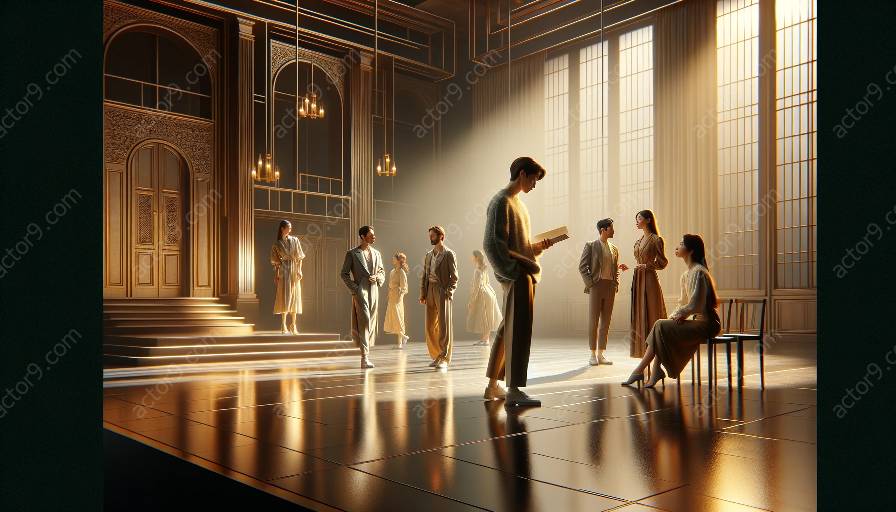Practical aesthetics is a significant approach in theater history that has greatly influenced acting techniques and the overall development of theatrical performances. This technique has had a profound impact on the way actors interpret and embody their characters, as well as how audiences engage with and understand the dramatic art form. In this exploration, we will delve into the origins and evolution of practical aesthetics, its compatibility with acting techniques, and its enduring significance in the world of theater.
Origins of Practical Aesthetics
Practical aesthetics emerged as a distinctive approach to acting in the late 20th century, primarily associated with the Atlantic Acting School in New York City. Founded by playwright and educator David Mamet and actor William H. Macy, this school became a pioneering institution for the development and dissemination of practical aesthetics. The approach was rooted in the belief that actors should focus on the basic elements of drama, such as objectives, tactics, and the given circumstances of a scene, to create authentic and compelling performances.
Development and Principles
The principles of practical aesthetics draw from a range of influences, including the teachings of Stanislavski, the methods of Meisner, and the minimalist aesthetic of the American theater. The approach emphasizes a text-based, action-oriented process that encourages actors to engage with the language and structure of a script to uncover the motivations and intentions of their characters. This dedication to the written word and the underlying psychology of the characters distinguishes practical aesthetics as a disciplined and nuanced method for approaching acting. Moreover, practitioners of practical aesthetics prioritize the notion of active listening and reacting truthfully within the given circumstances, fostering a heightened sense of authenticity and emotional connection in performance.
Compatibility with Acting Techniques
The compatibility of practical aesthetics with acting techniques lies in its emphasis on a systematic and analytical approach to character interpretation and scene work. While traditional techniques may focus on emotional recall and subjective experiences, practical aesthetics provides a structured framework that enables actors to dissect, understand, and embody their characters in a methodical manner. This compatibility allows actors to integrate the principles of practical aesthetics with other established techniques, creating a versatile and comprehensive approach to their craft.
Impact on Theatrical Performances
The impact of practical aesthetics on theatrical performances is profound, as it has contributed to the elevation of the actor's artistry and the overall quality of productions. By honing the actor's ability to engage with the text, convey truthful emotions, and create authentic interactions with fellow actors, practical aesthetics enriches the depth and resonance of performances. Moreover, this approach has also influenced directorial practices and the collaborative dynamics within theater productions, fostering a shared language and methodology that enhances the creative process and the final presentation on stage.
Enduring Significance
The enduring significance of practical aesthetics in the realm of theater is manifested in its enduring influence on acting pedagogy, the professional theater landscape, and the broader cultural appreciation of dramatic arts. As an approach that merges intellectual rigor with emotional truth, practical aesthetics continues to shape the training of actors and the interpretation of theatrical texts, ensuring that the legacy of this technique permeates contemporary and future theatrical endeavors.













































